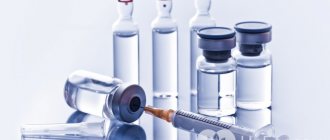All patients with hearing loss, as well as their relatives and parents, strive to maintain their existing hearing status. Even if the hearing loss is very deep. And this is really important - even the effectiveness of hearing aids is higher, the better the thresholds for the perception of sounds. There are plenty of factors that can lead to deterioration and, unfortunately, not all of them can be controlled. I was especially struck by a case from my own practice when a healthy child fell asleep safely in the evening, and in the morning, waking up, reported: “Mom, I don’t hear anything!”
But there is one damaging agent that we can control in the vast majority of cases. These are ototoxic drugs - drugs that have a side effect in the form of a negative effect on the inner ear.
I think this article will be read by people with hearing loss or their loved ones. It is unlikely that an average person with absolutely normal hearing, who does not have hard-of-hearing relatives, will look for such information. Therefore, I will focus on the appropriate audience.
Fortunately, “overt” ototoxic drugs are not often prescribed and, as a rule, doctors try not to use them in people with hearing loss. But there are different situations, so vigilance must be exercised when using any therapy. Science knows a large number of ototoxic drugs - more than 450. As a rule, they affect the nerve cells of the inner ear and, very rarely, the auditory nerve itself. Moreover, the side effect itself can manifest itself not only in hearing loss, but also in tinnitus and imbalance. An interesting fact is that both sides may not always suffer when using a drug systemically; sometimes the problems are one-sided.
Symptoms of ototoxic damage
The ototoxic effect of drugs is the destructive effect of drugs on the sensitive cells (neurons) of the inner ear and the auditory nerve.
The danger of the drug for hearing is indicated by the symptoms of sensorineural hearing loss that occur when using the drug. These include constant tinnitus, hearing loss, and disruption of the vestibular apparatus.
The appearance of signs of hearing loss does not always coincide with treatment. “Delay of symptoms” is dangerous - a phenomenon in which the first symptoms of sensorineural hearing loss appear a long time after the course of treatment.
Most often, hearing loss is combined with disturbances in the functioning of the vestibular apparatus and is manifested by the following symptoms:
- hearing loss in both ears;
- loss of the ability to hear high-frequency sounds, unintelligibility of children's and women's speech;
- the appearance of ringing, noise in the ears;
- nystagmus - involuntary movement of the eyes;
- dizziness when changing posture, walking;
- unsteady gait;
- inability to focus your gaze.
Classification, types of hearing loss: symptoms and treatment. Our article will talk about this.
Are you looking for material about sensorineural hearing loss: symptoms, degrees, treatment?
Treatment
The patient is detoxified, after which, according to indications, hormonal therapy is temporarily prescribed.
Some drugs have a projective, protective effect on the inner ear. The simultaneous use of such drugs with an ototoxic drug reduces the negative effect on hearing.
Thus, when prescribed with ototoxic aminoglycosides, Cavinton prevents hearing loss.
And yet: is purification necessary?
If a person eats properly, and his diet constantly contains vegetables, fruits, grain products and a sufficient amount of water, there is no need to resort to cleansing. But with a slow metabolism and abuse of drugs, alcohol and junk food, the functioning of organs becomes unstable, which can result in many health problems. In such cases, cleaning will not be unnecessary.
Signs indicating the need for detoxification:
- unpleasant odor from the mouth even after thorough and regular teeth cleaning;
- unpleasant body odor before and after taking a bath;
- abdominal cramps, constant bloating;
- frequent migraine attacks;
- bad, disturbing sleep;
- constant overwork and increased nervousness for no reason;
- increased sweating;
- unstable bowel movements: loose stools or vice versa – constipation;
- hard formations (sand, stones) in the kidneys or gall bladder;
- deterioration of skin condition: dryness, acne, oiliness, allergic manifestations;
- frequent swelling;
- frequent stomatitis, bronchitis, sinusitis, etc.
Ototoxic drugs
Nonsteroidal anti-inflammatory drugs
Diclofenac sodium, indomethacin, ibuprofen disrupt blood circulation in the capillaries of the inner ear, leading to temporary hearing loss. After stopping the medication, hearing is usually restored.
Psychotropic drugs
Antidepressants and tranquilizers with ototoxic properties - amitriptyline, Xanax, Tranxene, Librium, flurazepam, prozepam, midazolam, Doral, temazepam, oxazepam, triazolam, bupropion, carbamazepine, doxepin, norpramin, tofranil, molidone, phenelzine, Vivactil, trazodone.
Antibiotics
- Glycopeptides - vancomycin, teicomycin cause hearing loss when administered intravenously and impair the perception of high-frequency sounds.
- Ristomycin is a polypeptide antibiotic that acts on the auditory nerve and causes irreversible changes in hearing.
- Minocycline is an antibiotic from the tetracycline group that causes disruption of the vestibular apparatus.
- Erythromycin is an antibiotic considered the least toxic. It exhibits ototoxic properties when administered intravenously in large doses.
- Polymyxins - drugs from this group are used topically in the form of drops in the ears in the absence of perforation of the eardrum. Can cause complete deafness.
Aminoglycosides
Aminoglycosides are broad-spectrum antibiotics. Most of them are natural and are obtained from microscopic fungi Micromonospore and Streptomyces. The newest drugs are created using chemical modification of natural compounds.
Ototoxic aminoglycosides are conventionally grouped as:
- long-known drugs - streptomycin, kanamycin, monomycin, neomycin;
- new drugs - gentamicin, sisomycin, amikacin, tobramycin, netilmicin.
According to medical statistics, hearing impairment is more often caused by taking gentamicin and amikacin, and vestibular disorders are most often caused by tobramycin and gentamicin.
The risk of developing hearing loss symptoms increases:
- when taking several ototoxic drugs at the same time;
- a course of treatment lasting more than 2 weeks;
- concomitant use with diuretics.
Aminoglycosides are able to penetrate the placenta, accumulating in fetal tissues, increasing the risk of giving birth to a child with complete deafness.
Drugs in this group can enter the bloodstream through the skin and pose a particular danger to newborns. When used topically in the form of ointments and creams, aminoglycosides exhibit both an ototoxic effect and a nephrotoxic effect - they destroy the kidneys.
Indications for use
The main purpose of cytostatics is chemotherapy of malignant tumors and slowing down the proliferation of normal bone marrow cells. It is rapidly dividing cells that are most sensitive to cytostatic effects. Cells of the mucous membranes, skin, hair, and epithelial tissues of the gastrointestinal tract, dividing at a normal rate, react to a lesser extent. Usually a complex of drugs is prescribed, because neoplasms contain different cells that are resistant to certain types of medications. The combined effect of several cytostatics can prevent tumor relapses and prevent the disease from actively progressing. They are effective against malignant tumors of different types, complexity and parts of the body.
The indications are:
- early stages of cancer;
- neoplastic disease of the hematopoietic system – leukemia;
- lymphomas of varying degrees of malignancy, uterine chorionepithelioma, sarcomas;
- multiple myeloma, amyloidosis, plasmacytoma, Franklin's disease;
- autoimmune diseases affecting joints - rheumatoid arthritis, rheumatism, systemic scleroderma, reactive and psoriatic arthritis, ankylosing spondylitis;
- joint damage due to lupus erythematosus;
- systemic vasculitis;
- severe allergic diseases, rejection after transplantation;
- cancer of the digestive organs, breast, ovarian, prostate tumors.
Other drugs
- Contraceptives - ovidone, non-ovlon - worsen the composition of the blood in the inner ear, causing increased thrombus formation.
- Aspirin - an ototoxic effect is observed when taking 6-8 tablets of aspirin or preparations containing it per day.
- Chemotherapy drugs for the treatment of cancer - vincristine, cisplastine.
- Anti-tuberculosis drugs - the drug florimycin causes hearing loss by acting on the auditory nerve.
- Antimicrobial agents - of this group of drugs, furadonin most often causes an ototoxic effect. The drug has a neurotoxic effect and is contraindicated in case of sensorineural hearing loss.
- Cardiac medications - celiprolol, tambocor, lopressor, lidocaine, pronestil, propanolol, quinidine.
- And also drugs - vinblastine, methotrexate, misoprostol, atabrine, prednisolone.
Diuretics
The ototoxicity of a number of diuretics is explained by an imbalance of sodium and potassium in the fluid filling the cochlea of the inner ear.
Common ototoxic diuretics:
- furosemide is a frequently prescribed drug that is highly ototoxic;
- ethacrynic acid – high degree of ototoxicity;
- bumetanide is less likely than others in this group to exhibit ototoxicity.
Cases of hearing loss have been observed during therapy with betadine, tenoretic, and lasix.
Mechanism of action of cytostatics
Two driving mechanisms:
- changes in the structure of DNA, including abnormal twisting that prevents the strands from diverging during division, as well as repair disorders - restoring the continuity of the strand when damaged;
- cell division disorder is a disorder in the formation of the cell spindle, which separates chromosomes into daughter cells, typical of herbal preparations.
Not only each group, but also each cytostatic has its own mechanism of antitumor action, or rather, several mechanisms of damage, most of which are unknown.
Features of application
Hearing loss caused by ototoxic medications is unfortunately often irreversible.
There have been cases of hearing loss even with a single use of an ototoxic drug, for example, with the prescription of antibiotics tobramycin, gentamicin.
High ototoxicity is observed when treated with aminoglycoside antibiotics in combination with the diuretics furosemide or ethacrynic acid.
Today's best anticancer drug, cisplatin, in combination with gentamicin leads to deafness.
When applied topically, it is dangerous to instill drops and use ointments containing:
- novocaine;
- chloramphenicol, tetracycline, erythromycin, polymyxin B;
- antiseptics – furatsilin, chlorhexidine, benzalkonium chloride.
You can read about the features of the use of combined drugs in the treatment of otomycosis in our article “Otomycosis of the external and middle ear.”
Risk group
Certain individuals are more susceptible to damage to the inner ear and auditory nerve from ototoxic substances. A high risk of hearing loss and deafness is observed in the elderly, as well as in those who already suffer from sensorineural hearing loss.
Under the supervision of an ENT doctor, people who have hearing impairments, drink alcohol, or smoke should take ototoxic drugs. Treatment with drugs during pregnancy and breastfeeding is unacceptable .
It is dangerous for patients suffering from kidney disease and diabetes to take ototoxic drugs uncontrollably due to the peculiarities of their own metabolism and the production of toxins in the body.
At risk are persons whose professional activities require contact with chemicals - sulfur, arsenic, mercury and their compounds, lead, toluene, benzene, phosphorus, aniline, dihydroxylol.
Children are at risk. A number of ototoxic drugs have a much stronger effect on children than on adults.
Such drugs include gentamicin; there are known cases of significant hearing loss due to a single use of gentamicin in a child.
If the eardrum is perforated, ototoxic drugs should not be used topically. Treatment of persons at risk with such drugs should be carried out under audiometric hearing control.
Measures to detoxify the body
There are many methods, they can be divided into three groups:
- Medical therapy, in a hospital under the supervision of doctors
- Folk detoxification remedies
- Alternative medicine and cosmetology
1. Clinical detoxification therapy includes different approaches depending on the indications:
Most often, people come to the clinic with serious poisoning, alcohol intoxication, drug addiction, when poisoning with toxins is associated with risks to life.
2. Folk remedies for detox therapy:
- Herbal treatment
. Mainly infusions and teas and cleansing mixtures are used. - Fasting
. Highly effective method. By taking precautions, you can get rid of slagging in your body. - Cleansing with salt solution according to the Indian method
. Salt water is accepted from 2 to 4 liters. After each glass of water, you need to do exercises that force you to “flush” the intestines; the water comes out with the feces almost immediately (the process resembles an enema). - Bath
3. Alternative methods:
All these means are good for achieving the main goal - to cleanse your body of toxins. Consider detoxifying your body as an opportunity to explore yourself and learn to love your body. We should all know that the detoxification process involves both the body and the mind.
Detoxification drugs
Let us list several detoxification agents: “Polysorb”, “Eneterosgel”, “Polyphepan”, activated carbon and others. All means are good in this difficult struggle, but with one condition: all absorbents taken must be promptly removed from the body in a known way.









